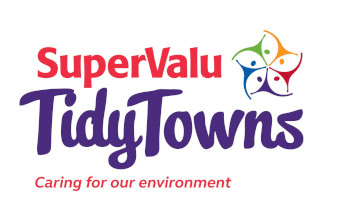FAQs
Is TidyTowns all about ‘Tidiness’?
Maybe. It depends on your definition of tidiness. To many tidy simply means ‘clean’, in which case it would be wrong to describe TidyTowns as dealing purely with cleanliness. However, tidy also means ‘well-ordered’, ‘considerable’ and ‘substantial’, which are far more relevant descriptions. TidyTowns is fundamentally about doing things properly – good planning, well maintained buildings and public spaces, appropriate landscaping and respect for natural amenities. It is also important to remember biodiversity, clean and uncluttered thoroughfares and, most importantly, community engagement.
But at the end of the day, isn’t it just a beauty contest?
No. In order to reach the highest standards under the TidyTowns programme, a deeper understanding and engagement with the needs of an area is required rather than just good presentation. Securing community involvement is very important as is adopting a strategic and systematic approach to all activities. These aspects are rated as well as the standard of presentation to ensure improvements are long-term and sustainable.
Does TidyTowns assess the town or the activities of the TidyTowns Group?
Both. The original idea of TidyTowns was to encourage the entrant to see their area the way a stranger might see it. Using a fresh eye, they should identify problem areas and propose solutions in partnership with the community and relevant authorities. This fundamental concept continues to this day, so an area must still have a high physical standard to attract substantial marks.
However, the entrant’s activities, such as level of community involvement and co-operation with other bodies, are directly looked at under the category ‘Overall Developmental Approach’. Whilst strategic approach and planning is taken into account throughout the rest of the assessment. That is the reason why new entrants, or entrants that don’t supply all the necessary information, may obtain a relatively low score even though the area appears well presented. Marks begin to increase when the appropriate structures and strategies are put in place and the adjudicator is kept fully informed in each year’s entry form. This is necessary to ensure that TidyTowns helps deliver sustainable, long-term improvement.
Is TidyTowns only open to Towns?
No. ‘Town’ in this case is a convenient catch-all expression. As TidyTowns is an inclusive initiative, areas of all sizes can take part and each are assessed under their respective categories. In fact, the only restriction on entry is that parts of an area cannot participate on their own. The whole area must come together as one entrant.
I live in a townland with a small number of houses and would love to participate, but as yet there is no ‘defined area’. Can I still enter?
Yes. Where there is a sense of community between the residents in a townland there is no obstacle to entering TidyTowns. In fact, participation could actually lead to an area becoming better defined over time thereby creating a solid platform for collectively addressing issues facing the community. All that’s needed is for some aspect of the area to act as focal point to anchor TidyTowns activities. This could be a local shop, pub, crossroads or bridge.
Alternatively, if the townland borders a town that already participates, there is scope for entering with the town. As the surrounding area is looked at in the TidyTowns assessment, there would be a role for those in the townland to make a very positive contribution to the overall town effort.
I live in a very large urban area with thousands of houses which are generally referred to as the one place. Is my estate not allowed enter on its own?
Maybe. Many large urban areas, particularly those built in the 60s, 70s and 80s, were built with little regard for traditional townland or village identities. The scale of these does not easily allow the development of a sense of place or a joined-up community.
TidyTowns works with residents and local businesses to help them define or reinforce their area identity so they can enjoy the same community benefits as those living in a more structured and planned environment. The following would, therefore, certainly be allowed to enter TidyTowns –
– Historic areas that have survived as districts.
– New stand-alone neighbourhoods which have emerged over time.
– New developments built with the specific purpose of being stand-alone districts.
We would always recommend that an estate enter TidyTowns for initial feedback. By so doing, this allows an adjudicator assess the situation and see whether the estate could qualify as a distinct area on its own or whether it should team up with other estates to better build a viable sustainable neighbourhood.
If TidyTowns is a competition there must be losers as well as winners?
No. Were it only a competition that could be the case, but TidyTowns is not only a competition. TidyTowns is also a support programme where participants are encouraged to improve standards from year to year. It is inevitable that certain areas will be further ahead in their development than others for any number of reasons. Equally, the inference that towns on lower ratings than others can be considered objectively ‘filthy’ or ‘dirty’ when there are so many other factors governing marks is to totally misunderstand the TidyTowns initiative.
Are the rules of TidyTowns consistent with best practice in environmental matters?
Yes. Like most things, concepts of best practice evolve over time as we learn more about the world we live in and the consequences of our actions. As the longest running environmental initiative in Ireland, TidyTowns has seen these concepts change over the years and has adapted accordingly. So ideas from, say 20 years ago, would not necessarily be reflected in TidyTowns today. We continue to ensure that the TidyTowns handbook and accompanying publications are up to date on current ideas and we are always open to consider contrary views put to us.


